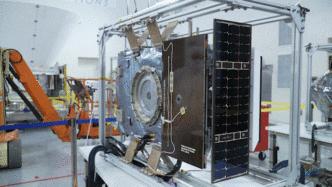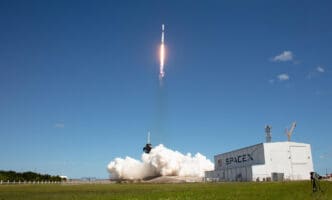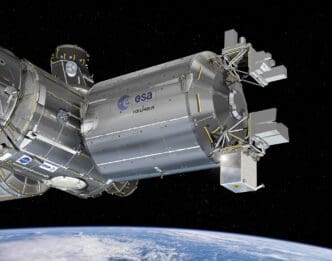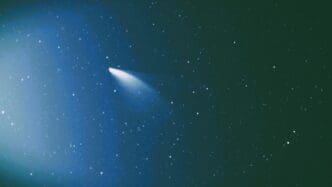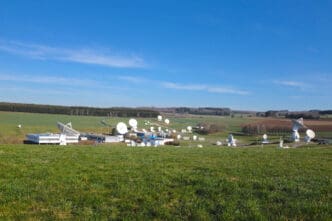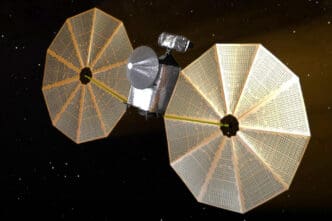NASA’s PUNCH mission is nearing a critical milestone. The spacecraft’s solar arrays were deployed and tested, moving it one step closer to its upcoming mission.
With launch preparations underway, the successful testing of these arrays is a significant achievement. They’ll power the instruments as PUNCH embarks on its journey to study the Sun’s corona and solar wind.
The Importance of Solar Arrays
Solar arrays are key. They provide the vital energy needed for PUNCH’s instruments and systems to function in space. Without them, the mission would stall.
Set against the majestic backdrop of Vandenberg Space Force Base, the testing of these arrays was a momentous occasion. It showcased the collaborative efforts of NASA’s top-tier technicians and engineers.
Testing in a Controlled Environment
The intricate tests took place in a cleanroom environment. This painstaking process aimed to prevent contamination, safeguarding PUNCH’s sensitive equipment.
A cleanroom isn’t just a fancy name; it’s a necessity. It ensures that not a speck of dust can disrupt the sensitive machinery that will soon travel beyond our atmosphere.
The technicians, dressed in white suits, moved with precision. Each action carefully choreographed, ensured the arrays would unfurl correctly in the cold expanse of space.
PUNCH’s Mission Objective
Simply put, it’s to study the Sun’s outer atmosphere and its shift into the solar wind. This information is pivotal for understanding our solar system’s dynamics.
This daring mission consists of four suitcase-sized satellites. They will work together to capture 3D images of solar phenomena.
Significant Collaboration
The Southwest Research Institute leads PUNCH.
NASA collaborates with these experts to deepen our understanding of the Sun. Their coordinated efforts make this mission possible.
It’s a partnership of minds and machines, aiming to unlock the mysteries of our solar system. Each entity contributes unique expertise to bring this mission to fruition.
Launch Preparations with SPHEREx
PUNCH won’t be flying solo. It’s hitching a ride with NASA’s SPHEREx mission.
Scheduled to lift off on SpaceX’s Falcon 9 rocket, the launch is a rideshare mission. SPHEREx aims to explore the origins of the universe, complementing PUNCH’s solar studies.
Both missions offer invaluable insights and share resources, exemplifying NASA’s efficient use of technology and mission integration.
Significance of Solar Wind Studies
The solar wind is more than just a cosmic phenomenon. It affects technology on Earth.
Understanding these solar activities helps protect satellites and power grids from solar disruptions.
PUNCH’s studies will not only aid scientific understanding but also serve practical applications, safeguarding our technological infrastructure.
Countdown to Launch
With the testing phase successful, anticipation builds for the launch.
Scheduled for February 27, 2025, this launch marks another milestone in solar exploration.
As the countdown continues, excitement grows among scientists and enthusiasts eager to see these missions take flight.
The Future Beyond Launch
PUNCH’s mission extends beyond its launch date.
It’s set to provide valuable data that will influence future space explorations and technologies.
The success of this mission could pave the way for more advanced solar and space studies.
Reflecting on Human Ingenuity
At the heart of PUNCH’s mission is human innovation and scientific curiosity.
It reflects our continual drive to understand the universe and our place within it. As PUNCH ventures into space, it carries with it the hopes and dreams of many dedicated scientists and engineers.
NASA’s PUNCH mission is on the verge of a groundbreaking journey. With successful solar array testing, it’s poised to expand our understanding of the Sun.

